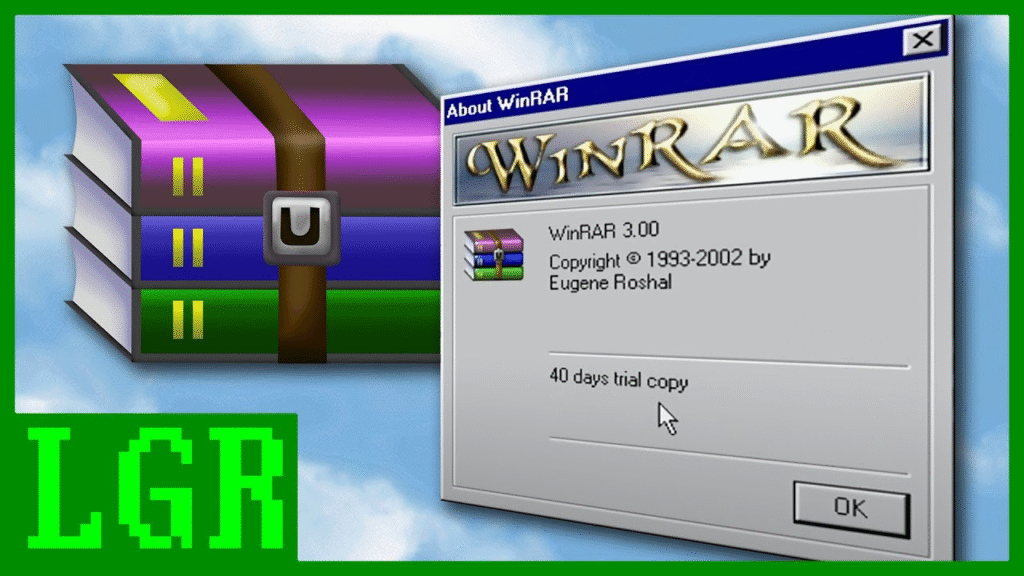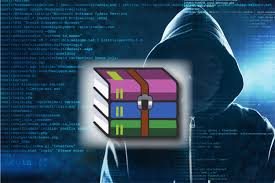Zero-day WinRAR flaw (CVE-2025-8088) exploited by RomCom highlights critical risk. Learn how this weakness works, who’s behind it, and what you must do now.
Why You Should Wake Up to the WinRAR Zero-Day
Picture this: a seemingly innocent CV—maybe your recruiter’s dream candidate—lands in your inbox. You open the attached RAR file, thinking “No big deal.” But inside that archive, hidden in plain sight, lies a malicious file ready to spring to life next time you reboot. This isn’t a cyber-thriller in development—it’s the newly discovered CVE-2025-8088 in WinRAR, now weaponized by the Russia-aligned RomCom group.

If you’re scratching your head wondering, “Wait—why is my old file extractor suddenly in the spotlight?”—you’re not alone. But understanding how a vulnerability in software as ubiquitous as WinRAR can open doors to cyber-espionage is vital—especially for businesses, students, and tech pros across India.
Let’s unpack the why, the how, and—most importantly—what you absolutely must do.
What Is CVE-2025-8088? : WinRAR CVE-2025-8088
Think of your computer like a house. When you extract files from WinRAR, you’re inviting those files into your home. Normally, they go where you expect—your Downloads or Desktop folder. But CVE-2025-8088 is like a hidden backdoor in WinRAR that lets attackers redirect files into secret corners—like your Startup folder—without your notice Tom’s HardwareNVDVulnerability Lookup.
Why This Matters
- It’s a path traversal exploit—malicious archives manipulate file paths to slip files into unexpected locations—think “../../” tricks that go way up the directory tree.
- Once a file lands in your Startup folder, it runs automatically the next time you boot up. That backdoor isn’t hypothetical—it’s real, and it’s been used in the wild Tom’s Hardware.
- CVE-2025-8088 carries a high severity score: CVSS 8.4, signaling dangerous potential for damage CVE FindVulnerability Lookup.
Summary: An ordinary-looking archive file can stealthily insert malware that launches on startup—without your knowing.
Key takeaway:
If you open a RAR and let it extract files without checking—and especially if you’re using an outdated version of WinRAR—you’re essentially handing attackers a VIP pass into your system.
Who’s Pulling This Strings? RomCom Unpacked
RomCom might sound like a dating app, but it’s actually a serious Russia-aligned cyber-espionage group (aliases include UNC2596, Storm-0978, Tropical Scorpius) targeting financial, defense, logistics, and manufacturing sectors across Europe and Canada Tom’s HardwareBleepingComputerTechRadar.
Between July 18 and 21, 2025, ESET researchers saw spear-phishing messages carrying malicious RAR files disguised as CVs, targeting these industries—but thankfully, no confirmed breaches yet Tom’s Hardware.
Once inside, RomCom dropped notorious backdoors: SnipBot variants, RustyClaw, Mythic agent—powerful, stealthy tools that let attackers take command and download more malicious modules Tom’s Hardware.
Storytelling note: Imagine you’re hosting a party and the doorbell rings. You think it’s a friend, but it’s someone in disguise. Before you know it, the party’s crashed—and they’re calling the tunes.
Key takeaway:
RomCom doesn’t shoot spam blindly. They craft smart, targeted attacks against organizations where stakes are high—and they back their ingenuity with custom backdoors.
WinRAR’s History of Path Traversal Woes

This isn’t the first time WinRAR slipped on path traversal. Just a month prior, CVE-2025-6218 exposed almost identical behavior. A malicious RAR, particularly on Windows, could silently drop exploits into unauthorized areas—and yes, auto-start on boot TechRadarPRSOL:CCBleepingComputerHelp Net Security.
- Discovered June 2025 by “whs3-detonator” via Trend Micro’s ZDI
- Affected WinRAR v7.11 and older (plus Windows RAR, UnRAR, UnRAR.dll)
- Fix shipped in WinRAR 7.12 Beta 1, later finalized Help Net SecurityBleepingComputer
So users have had a month to update—but many haven’t.
Key takeaway:
If your WinRAR is still on version 7.11 or earlier, you’ve been living with one foot in a trap—and that trap just got reset by a second exploit.
How It Works—Simplified Technical Breakdown
Path Traversal in Everyday Terms
Remember those “../” steps you type in command-line? Think of them as taking a staircase up to the parent folder. A malicious RAR could embed file paths like “../../Startup/malware.exe” so that when WinRAR extracts, it walks up and drops malware exactly where it can auto-launch.
A Harmful Recipe:
- Malicious RAR file arrives (via email, fake site, whatever).
- You open it with WinRAR and click “Extract here.”
- WinRAR—trusting the RAR metadata—follows the crafted path and drops malware into Startup or ProgramData.
- Reboot or log in → malware runs, opening Remote Access, data theft, or espionage doors.
Attacker-only needs user click, not admin privileges. That’s what makes these paths particularly slippery CVE DetailsGitHub.
What You Must Do—Practical Steps

1. Update WinRAR to the latest version (7.13 or newer)
WinRAR addressed CVE-2025-8088 in version 7.13 released around July 31—so update ASAP. It’s critical because WinRAR lacks auto-update—manual only Tom’s Hardware.
2. Be especially wary of RAR files from unknown senders
If an email promises a CV, invoice, or “urgent doc”—verify before opening, especially if it’s compressed.
3. Use principle of least privilege
Run everyday tasks under a standard user account—not admin. Even if malware lands on your system, its reach is limited.
4. Add layers of defense
Consider antivirus that scans for path traversal in archives, or corporate email filters that block dangerous archive types.
5. Educate teams (or yourself if solo)
A quick training: “Hey, don’t extract unknown RARs without checking.” These small habits save big headaches.
Summary: Patch, pause, and practice caution. If you take just one of these steps, make it updating to 7.13.
A Real-World Analogy (Just Like Cooking)
Imagine cooking biryani. You expect rice to go into the biryani pan—but someone slips it into the pressure cooker instead. Now every ingredient’s cooking in the wrong place—it could blow up. That’s what path traversal does to your system: files land where they shouldn’t, with no one noticing.
Be the head chef of your system. Only let ingredients (files) go where they belong.
Section Wrap-Up
Every section comes with a key human takeaway:
- What’s CVE-2025-8088? It’s like a hidden backdoor letting malware auto-run.
- RomCom’s role: These aren’t amateur pranksters—they’re espionage pros targeting sensitive sectors.
- WinRAR history: This is déjà vu—and the software’s already stumbled once this year.
- How it works: A quick click, directories misused—boom, malware runs.
What to do: Update, filter attachments, work wisely, protect yourself.
Final Thought
This might seem like a beta-day in tech news, but for many, it’s a wake-up call. A powerful tool like WinRAR doesn’t auto-update—and in the wrong hands, that’s a vulnerability waiting to happen.
So tell me: have you installed 7.13 yet, or is a colleague still using an older version? How about sharing this with your IT team—especially if your work involves sensitive info like finance, manufacturing, or infra. Let’s turn awareness into action.

What is CVE-2025-8088 in WinRAR?
A path traversal vulnerability in WinRAR for Windows that allows attackers to drop and auto-run malware in sensitive folders.
Who exploited this vulnerability?
The Russia-aligned cyber-espionage group RomCom used it in targeted spear-phishing attacks.
Was this WinRAR flaw exploited before?
Yes—earlier in June, CVE-2025-6218 was found and patched in version 7.12.
How can I protect my system?
Update to WinRAR 7.13, avoid opening unknown RAR files, and follow safe computing practices
Which WinRAR versions are vulnerable?
Versions 7.12 and earlier (including Windows RAR, UnRAR, UnRAR.dll). Fixed in version 7.13.